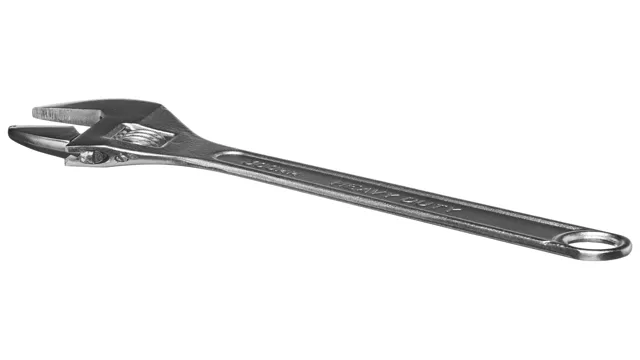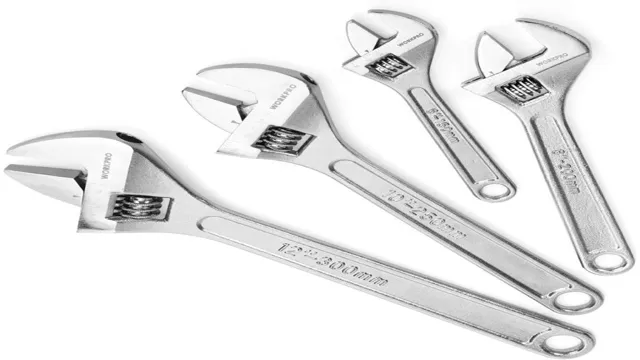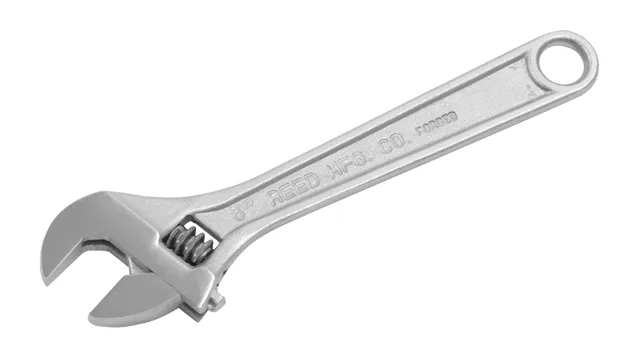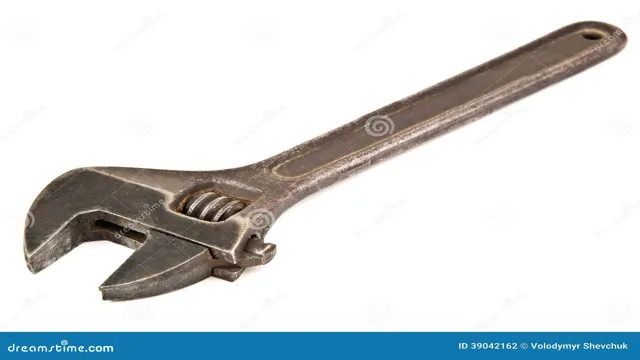How to Use an Adjustable Wrench: Tips and Tricks for Tightening Bolts and Nuts
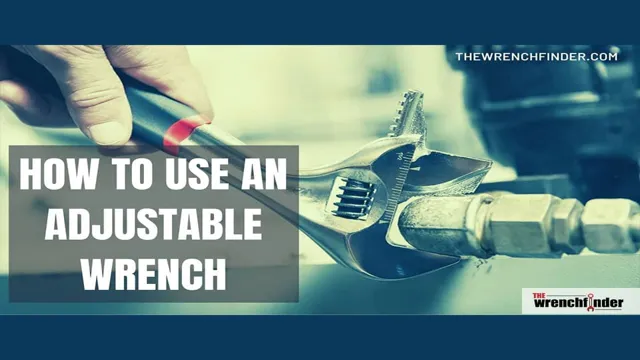
Have you ever found yourself in need of tightening or loosening a nut or bolt but didn’t have the right sized wrench? It’s a common predicament, but an adjustable wrench can solve that problem. With its ability to adjust to different sizes, this tool is a versatile addition to any toolbox. Whether you’re a DIY enthusiast or a professional mechanic, knowing how to use an adjustable wrench can make your work easier and faster.
In this blog post, we’ll explore the basics of using an adjustable wrench and offer tips on how to make the most of this tool. So, grab your trusty adjustable wrench and let’s get started!
Understanding the Tool
An adjustable wrench can come in handy when you need to tighten or loosen nuts and bolts of varying sizes. But how exactly do you use this tool? First, it’s important to adjust the jaw size of the wrench to fit the nut or bolt you are working on. To do this, simply turn the knob or lever located at the base of the wrench until the jaws are snugly fitted around the nut or bolt.
Then, use the wrench to turn the nut or bolt in the desired direction. Remember to position the wrench in such a way that you are pulling towards yourself, as this will give you more leverage and prevent the wrench from slipping off. It’s also important to not over-tighten or over-loosen, as this can damage the nut or bolt.
With a little practice, using an adjustable wrench can become second nature, making your DIY tasks a breeze.
The Parts of an Adjustable Wrench
Adjustable wrench An adjustable wrench is a versatile tool that every DIY enthusiast and professional mechanic should have in their toolkit. It is an indispensable tool for various tasks, including plumbing, automotive repair, and other construction and maintenance work. Understanding the parts and features of this tool can make it easier to use and ensure that you get the most out of it.
An adjustable wrench typically has two main parts: the handle and the jaws. The handle provides a grip for the user, while the jaws help to grip nuts and bolts of different sizes. Some wrenches have scales or graduations on one or both sides of the jaws, which can help you find the right size nut or bolt quickly.
The head of the wrench can either be fixed or adjustable and is used to hold the jaws in place. By turning the adjusting screw or knob on an adjustable wrench, you can increase or decrease the distance between the jaws to fit different sizes of nuts or bolt heads. With proper use and maintenance, adjustable wrenches can last for many years, making them an excellent investment for any tool collection.
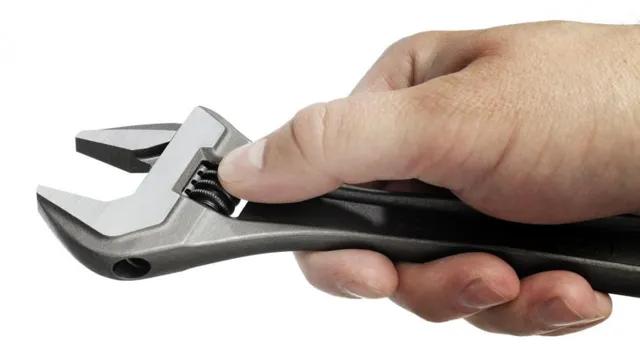
Types of Adjustable Wrenches
Adjustable wrenches come in many different types and understanding which one is right for the job can make all the difference. One of the most common types of adjustable wrenches is the crescent wrench. This wrench has a curved head that can be adjusted to fit a variety of sizes.
Another type of adjustable wrench is the plumber’s wrench, also known as a pipe wrench. This wrench is designed specifically for use with pipes and features sharp teeth that can grip onto the curved surface of pipes without slipping. A monkey wrench, on the other hand, has a straight head and angled jaws that make it ideal for working in tight spaces.
Overall, adjustable wrenches are a versatile tool that can be used for a variety of tasks. Understanding which type of wrench to use can save you time and frustration, so it’s important to choose the right one for the job at hand.
Using an Adjustable Wrench
Adjustable wrenches are a versatile tool that can be used for a multitude of tasks. If you’re wondering how to use an adjustable wrench, it’s quite simple! First, adjust the size of the wrench by turning the movable jaw to the desired width. Make sure it’s snug but not too tight on the object you want to turn.
Next, grip the wrench handle firmly and turn it in the direction you need to loosen or tighten the object. You want to avoid over-tightening the wrench as this could damage the object you’re working on. If you’re having trouble getting a firm grip, consider using a rubber band or cloth to pad the jaws of the wrench.
Overall, an adjustable wrench is a useful precision tool to have in your toolbox for completing tasks around the home or worksite.
Selecting the Correct Size
When it comes to using an adjustable wrench, selecting the correct size is crucial for getting the job done right. The size is usually indicated on the wrench itself, and it’s important to match it with the size of the nut or bolt being tightened or loosened. Trying to use the wrong size wrench can result in stripped or damaged hardware, which can be costly to repair.
It’s also important to adjust the wrench to the correct tightness before using it, as over-tightening can cause the wrench to slip and damage the hardware. Remember, just like trying to unscrew a jar lid with a butter knife, using the wrong size wrench can lead to frustration and inefficiency. So, take the time to find the right size wrench for the job and save yourself time and hassle in the long run!
Adjusting the Wrench
Adjustable Wrench Using an adjustable wrench can be very useful in tightening or loosening bolts and nuts of different sizes. To adjust the wrench, locate the adjusting screw on the wrench’s head and turn it until the jaws of the wrench are wide enough to fit the nut or bolt. Make sure the jaws are tight enough by testing the wrench’s grip on the nut or bolt.
Do not apply too much force on the wrench as it may damage the fastener or the wrench itself. If the nut is too tight, use a longer handle or a cheater bar for added leverage. It is also important to choose the right size of adjustable wrench for the job to ensure that it performs efficiently.
A well-maintained adjustable wrench should last for years and provide reliable service when properly used. With some practice, using an adjustable wrench becomes intuitive, making it an essential tool for any DIY, auto repair, or plumbing project.
Securing the Wrench to the Nut or Bolt
Securing the Wrench to the Nut or Bolt Using an Adjustable Wrench When it comes to securing a wrench to a nut or bolt, an adjustable wrench can come in handy. It is versatile and can fit different sizes of nuts and bolts. To start, choose the correct size of the wrench and place it onto the nut or bolt.
Ensure that the jaws of the wrench are securely fastened to the nut or bolt and that there is no slippage. Holding the wrench in place with your dominant hand, use your other hand to rotate the nut or bolt clockwise to tighten or counterclockwise to loosen. It is important to grip the wrench tightly to avoid stripping or damaging the nut or bolt.
When securing a wrench to a nut or bolt, always remember to use steady, controlled movements to avoid injury or damage to the fastener. By using an adjustable wrench properly, you can safely secure nuts and bolts with ease.
Removing the Nut or Bolt
If you find yourself in need of removing a nut or bolt, an adjustable wrench can be a handy tool to have in your toolbox. An adjustable wrench, also known as a crescent wrench, can be adjusted to fit different sized nuts and bolts. To use an adjustable wrench, first, adjust the jaws to fit the size of the nut or bolt you’re trying to remove.
Then, position the adjustable wrench on the nut or bolt and turn it counterclockwise to loosen it. Be sure to hold the wrench securely and apply enough force to turn the nut or bolt but not so much that you damage the surrounding area. With a little practice, you’ll be able to use an adjustable wrench to remove nuts and bolts with ease.
Maintenance and Safety
If you’re thinking about using an adjustable wrench, it’s important that you know how to use it properly. Start by selecting the right-sized wrench for the task at hand. Then, adjust the opening of the wrench to fit the nut or bolt you need to turn – this can be done by twisting the knurled wheel at the base of the handle.
Make sure that the wrench is securely in place before applying force, as a loose grip can cause damage to both the tool and the object you’re working with. When using an adjustable wrench, it’s also important to apply force in the correct direction to avoid rounding off the edges of the object you’re working with. Remember to use the wrench at a 90-degree angle to the nut or bolt, and turn it in a clockwise direction to tighten and a counterclockwise direction to loosen.
By following these steps, you should be able to use an adjustable wrench safely and effectively for a multitude of tasks.
Cleaning and Lubricating the Wrench
Cleaning and lubricating your wrench is an essential part of keeping your tools in good shape. It is important to understand how to maintain your wrench properly to ensure its longevity and efficiency. Cleaning your wrench helps to prevent rust and corrosion from forming on the metal surface, while lubricating it ensures smooth functioning and ease of use.
To clean your wrench, you can use a soft cloth and a mild soap solution to gently wipe down the surface. Be sure to dry it thoroughly afterwards to prevent any moisture from accumulating. Once it is clean, you can apply lubricant to the moving parts of the wrench, such as the pivot and jaw.
This will help to reduce friction and make tightening and loosening bolts easier. Taking care of your tools not only ensures their usefulness but also keeps you safe when using them. A properly maintained wrench will be less likely to slip or break, preventing accidents in the workplace.
Remember to clean and lubricate your wrench after each use to keep it in top shape for years to come.
Safety Tips for Using an Adjustable Wrench
Adjustable Wrench Safety Tips An adjustable wrench is a versatile tool that is useful in many applications. However, it’s important to use it safely to avoid accidents or damage. One of the main safety tips is to regularly inspect the wrench for any wear or damage.
Check that the jaws of the wrench firmly grip the bolt or nut, and that the thread pitch is correct. This ensures that the wrench won’t slip or round the edges of the fastener, causing damage or injuries. It’s also crucial to use the correct size wrench for the job.
Do not force a smaller wrench onto a larger fastener, as this may result in the jaws slipping and the wrench becoming damaged. Additionally, do not use a wrench as a hammer, as this damages its moving parts, creating a safety hazard. Another important safety tip is to never use a damaged wrench.
If the jaws are worn, the handle is loose, or any other damage is present, discontinue use and replace the wrench. To prevent injuries, hold the wrench securely, and keep your fingers away from the jaws’ opening. This will reduce the risk of pinched fingers.
Lastly, never leave a wrench on the work surface, as this could become a safety hazard, and someone could easily trip over it. In conclusion, using an adjustable wrench safely is crucial to avoid injuries and damage. By regularly inspecting your wrench, using the correct size and not using a damaged wrench, you can safely and effectively complete your tasks.
Keep these tips in mind to ensure your safety and the longevity of your adjustable wrench.
Conclusion
In conclusion, the adjustable wrench is like a versatile superhero in your toolbox. With its ability to adapt to different nut and bolt sizes, it can save the day on any job. Just remember to adjust it properly, grip it firmly, and turn with confidence.
And like any good superhero, use your powers for good, not evil. Happy wrenching!”
FAQs
What is an adjustable wrench and how does it work?
An adjustable wrench is a tool used to grip and loosen nuts and bolts of different sizes. It works by adjusting the jaw opening to fit the nut or bolt, then tightening the grip using a movable jaw.
Can an adjustable wrench be used on all types of nuts and bolts?
While adjustable wrenches can work on a wide range of nut and bolt sizes, it’s important to use the correct tool for the job to ensure the right level of torque and avoid damage to the fastener or the tool.
How do you adjust the size of an adjustable wrench?
To adjust the size of an adjustable wrench, move the movable jaw up or down by twisting the tool’s worm gear or knob until the size is just right. Then, tighten the jaw to grip the nut or bolt.
How much torque can an adjustable wrench provide?
The amount of torque an adjustable wrench can provide can vary depending on the size, quality, and material of the tool. It’s important to use the right tool for the job to avoid over-tightening or damaging the fastener.
What are some tips for using an adjustable wrench safely?
To use an adjustable wrench safely, make sure to: select the right tool for the job, adjust the jaw size properly, apply even pressure to avoid slipping or rounding out the fastener edges, and use personal protective equipment like gloves and eye protection.
How do you care for and maintain an adjustable wrench?
To care for an adjustable wrench, keep it clean and dry after use, store it in a dry and secure place, lubricate the worm gear and movable jaw as needed, and inspect the tool regularly for wear and damage.
Can an adjustable wrench be used as a substitute for other wrench types?
While an adjustable wrench can be handy in many situations, it’s not always the best tool for the job. For example, it may not provide enough torque for heavy-duty applications or fit into tight spaces where a specialized wrench is needed.

